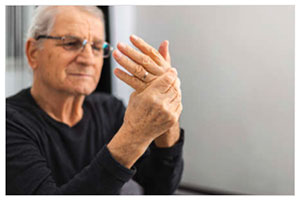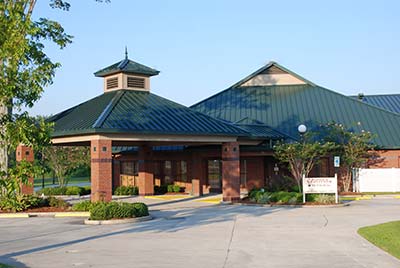Pain Blog: Does Arthritis Cause Deformity?
 Rheumatoid arthritis is one of the top causes of joint deformities in the hands and feet. Without treatment, these deformities become severe and debilitating.
Rheumatoid arthritis is one of the top causes of joint deformities in the hands and feet. Without treatment, these deformities become severe and debilitating.
But rheumatoid arthritis isn’t the only culprit. Osteoarthritis also results in joint deformities that most often appear in the hands and knees.
The Headache & Pain Center specializes in advanced treatments that relieve the pain of arthritis. The people who come to us for help with their pain often have joint deformities. Whether your deformity is in an early or advanced stage, we recommend treatments that may prevent progressive damage.
Pain Blog Articles
Herniated Disk or Muscle Strain?
Does Arthritis Cause Deformity?
Is Your Lifestyle Causing Back Pain?
Why You Shouldn't Ignore Neck Pain
What Could Be Causing Spine Pain?
Remedy & Prevent Sciatica Pain
Can I Get a Spinal Cord Stimulator?
Rheumatoid arthritis: Inflammation leads to deformities
Rheumatoid arthritis is an autoimmune disease that begins when your immune system mistakenly attacks the membrane that lines your joints. This membrane, called the synovium, quickly becomes inflamed and swollen.
Inflammation in the joint causes the hallmark symptoms of rheumatoid arthritis: joint pain, swelling, tenderness, and stiffness. But the problem doesn’t end there.
Ongoing inflammation wears down the bones inside the joint, as well as the cartilage covering the bone. Swelling stretches out tissues that normally support the joint. This combination of loose tissues and bone erosion leads to permanent joint damage and bone deformities.
Bone erosion occurs early in the disease. More than 10% of patients have bone erosion within eight weeks after their rheumatoid arthritis begins. Up to 60% have significant bone erosion after one year.
Without treatment, the bone erosion keeps getting worse, leading to severe deformities that make it hard, if not impossible, to use the affected joint. In most cases, rheumatoid arthritis begins in your hands or feet, causing different types of deformities in your fingers and toes.
Osteoarthritis: Excess bone growth causes deformities
The ends of the bones inside your joints are covered with articular cartilage. Normally, this cartilage cushions the bones, allowing them to move smoothly in the joint without grating against one another.
Over the years, the cartilage gradually degenerates. As more of the cartilage wears away, bone rubs against bone. In addition to causing pain and stiffness, this bone-on-bone irritation leads to another problem.
When bones in the joint become irritated, they produce new bone growth. The new bone grows into a protrusion called a bone spur and creates a bump or knob-like deformity. As the bone spur enlarges, it pushes the bones out of alignment, causing crooked or deformed joints.
Bony nodules are especially noticeable if you have osteoarthritis in your fingers. In fact, they’re one of the earliest signs of osteoarthritis.
You may not notice a visible bump when you have osteoarthritis in a large joint like your knee. But in your knee, the problem still causes deformity. Bone growth in your knee causes leg bowing or a knock-knee deformity. It can affect your ability to straighten and bend your knee.
Osteoarthritis also causes inflammation in the joint. Though inflammation isn’t the primary cause of osteoarthritis deformities, it can cause bone erosion.
Deformity prevention depends on the type of arthritis
Rheumatoid arthritis has the potential to cause a more severe deformity. But the good news is that you can treat this type of arthritis with medications called disease modifying antirheumatic drugs (DMARDs).
DMARDs prevent or slow down joint damage by suppressing your immune system and stopping inflammation. Bone and cartilage damage occur so early in the disease, that it’s important to start taking DMARDs as soon as your diagnosis is confirmed.
Since osteoarthritis is a wear-and-tear disease and not associated with your immune system, we don’t have medications to stop the bone deformities. The best approach for osteoarthritis is to follow a specialized exercise regimen and get treatment to ease the pain.
Using our expertise in interventional pain management, we offer many types of treatments that alleviate the pain of both types of arthritis. The sooner you seek help, the better your chances are of slowing down disease progression in rheumatoid arthritis and osteoarthritis.
To learn about today’s most advanced pain treatments for arthritis, contact us at the Headache & Pain Center in New Iberia or Gray, Louisiana.



